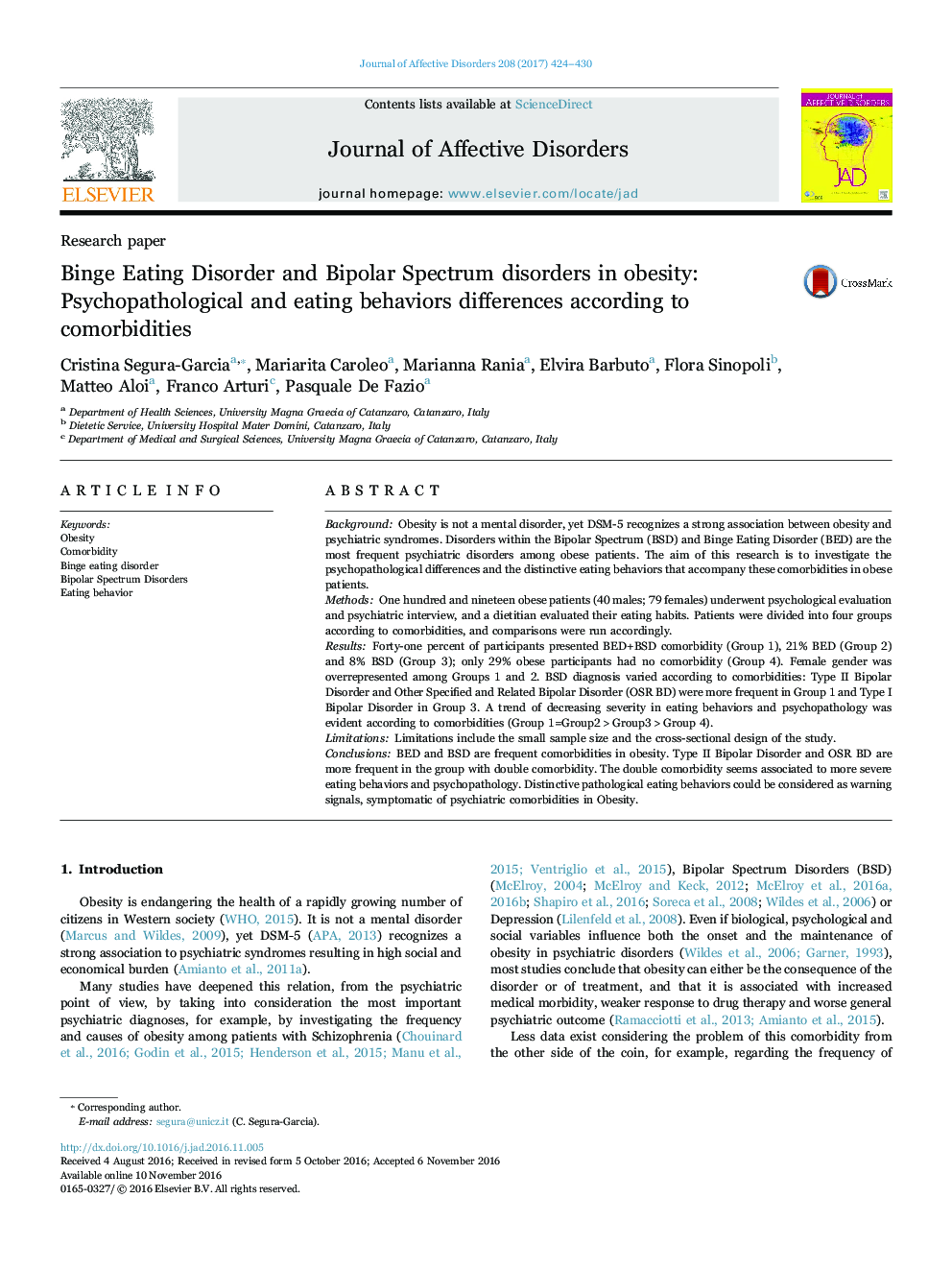| کد مقاله | کد نشریه | سال انتشار | مقاله انگلیسی | نسخه تمام متن |
|---|---|---|---|---|
| 5722108 | 1608117 | 2017 | 7 صفحه PDF | دانلود رایگان |
- We divided 119 obese according to BED or Bipolar Spectrum Disorder (BSD) comorbidity.
- We assessed altered eating behaviors and general psychopathology.
- Comorbidities were 41% BED-BSD, 21% BED and 8% BSD; only 29% had no comorbidity.
- The trend of symptoms severity was BED-BSD=BED>BSD>obese without comorbidity.
- Altered eating behaviors can be warning sign lights of comorbidities in obesity.
BackgroundObesity is not a mental disorder, yet DSM-5 recognizes a strong association between obesity and psychiatric syndromes. Disorders within the Bipolar Spectrum (BSD) and Binge Eating Disorder (BED) are the most frequent psychiatric disorders among obese patients. The aim of this research is to investigate the psychopathological differences and the distinctive eating behaviors that accompany these comorbidities in obese patients.MethodsOne hundred and nineteen obese patients (40 males; 79 females) underwent psychological evaluation and psychiatric interview, and a dietitian evaluated their eating habits. Patients were divided into four groups according to comorbidities, and comparisons were run accordingly.ResultsForty-one percent of participants presented BED+BSD comorbidity (Group 1), 21% BED (Group 2) and 8% BSD (Group 3); only 29% obese participants had no comorbidity (Group 4). Female gender was overrepresented among Groups 1 and 2. BSD diagnosis varied according to comorbidities: Type II Bipolar Disorder and Other Specified and Related Bipolar Disorder (OSR BD) were more frequent in Group 1 and Type I Bipolar Disorder in Group 3. A trend of decreasing severity in eating behaviors and psychopathology was evident according to comorbidities (Group 1=Group2>Group3>Group 4).LimitationsLimitations include the small sample size and the cross-sectional design of the study.ConclusionsBED and BSD are frequent comorbidities in obesity. Type II Bipolar Disorder and OSR BD are more frequent in the group with double comorbidity. The double comorbidity seems associated to more severe eating behaviors and psychopathology. Distinctive pathological eating behaviors could be considered as warning signals, symptomatic of psychiatric comorbidities in Obesity.
Journal: Journal of Affective Disorders - Volume 208, 15 January 2017, Pages 424-430
